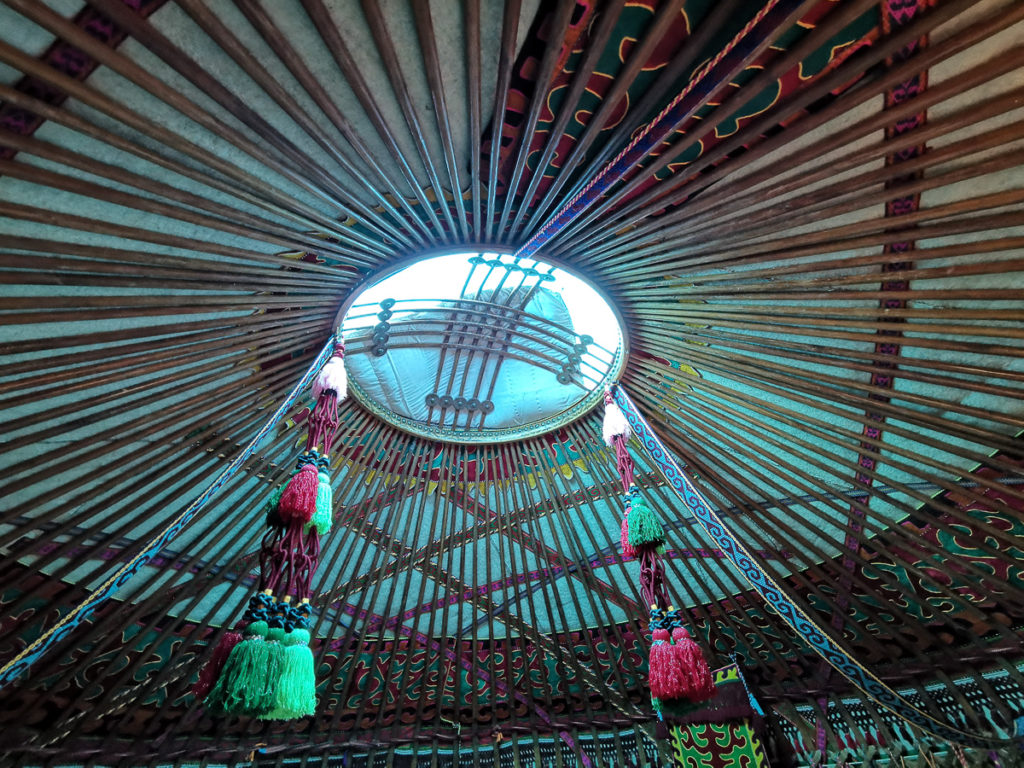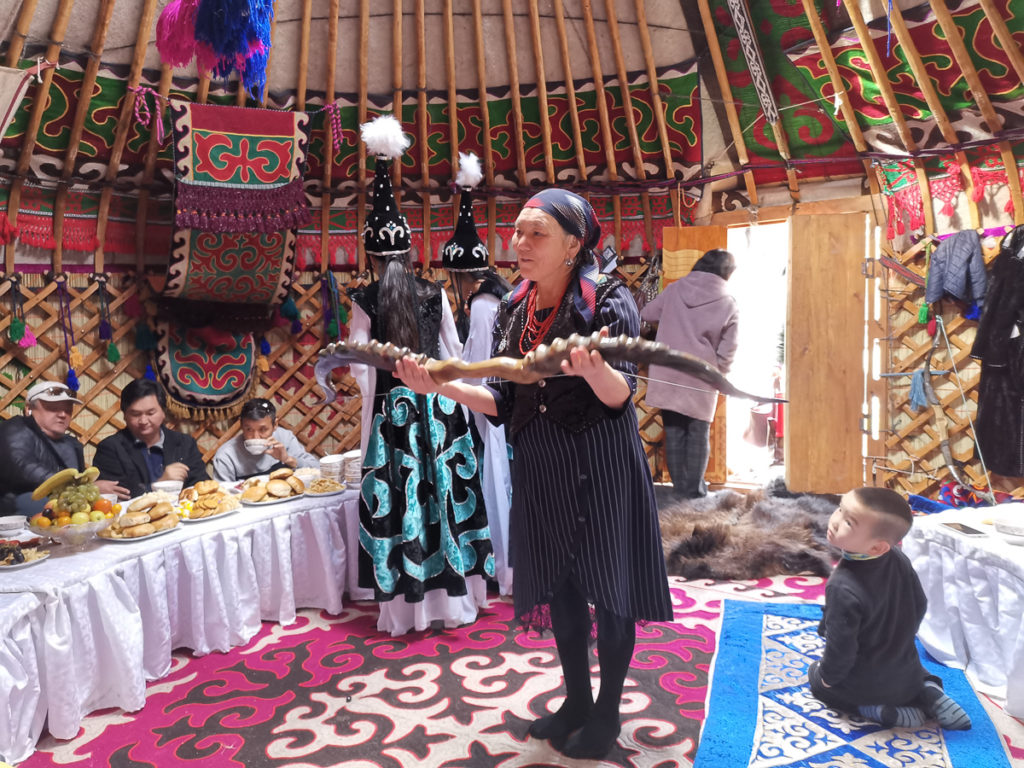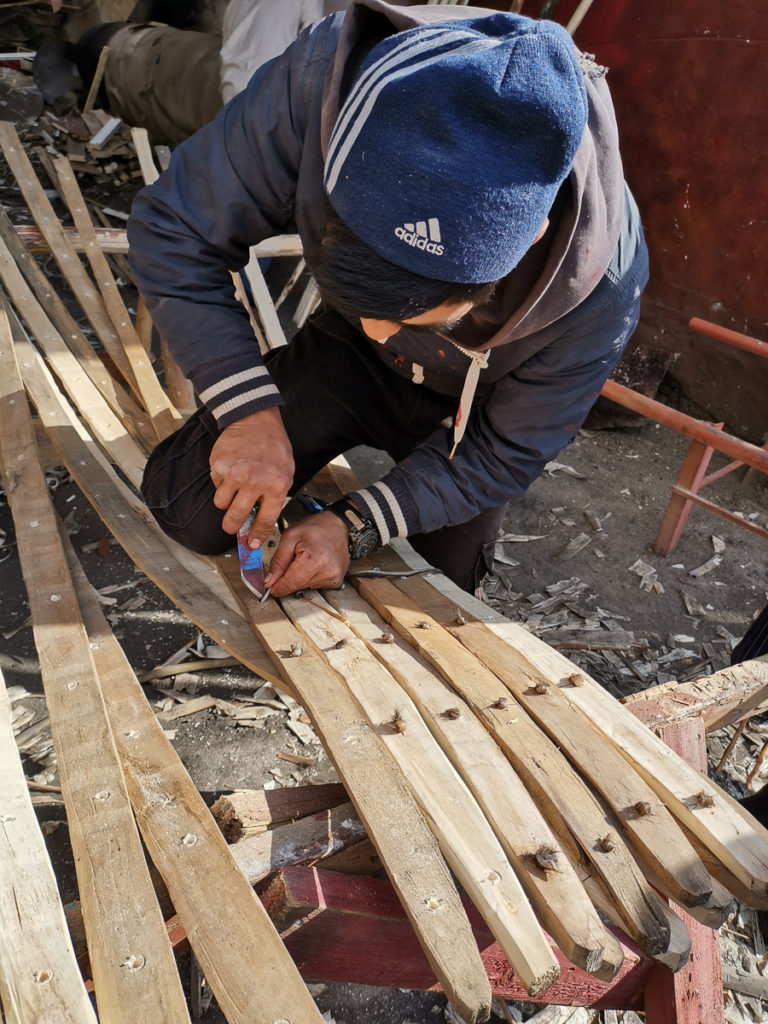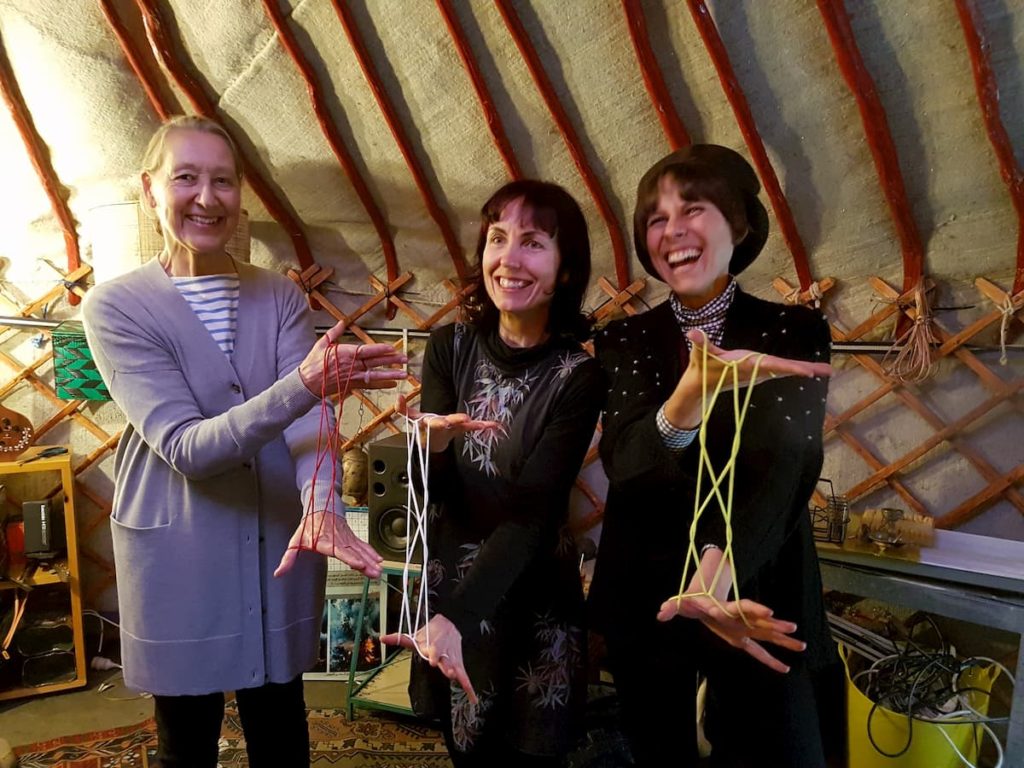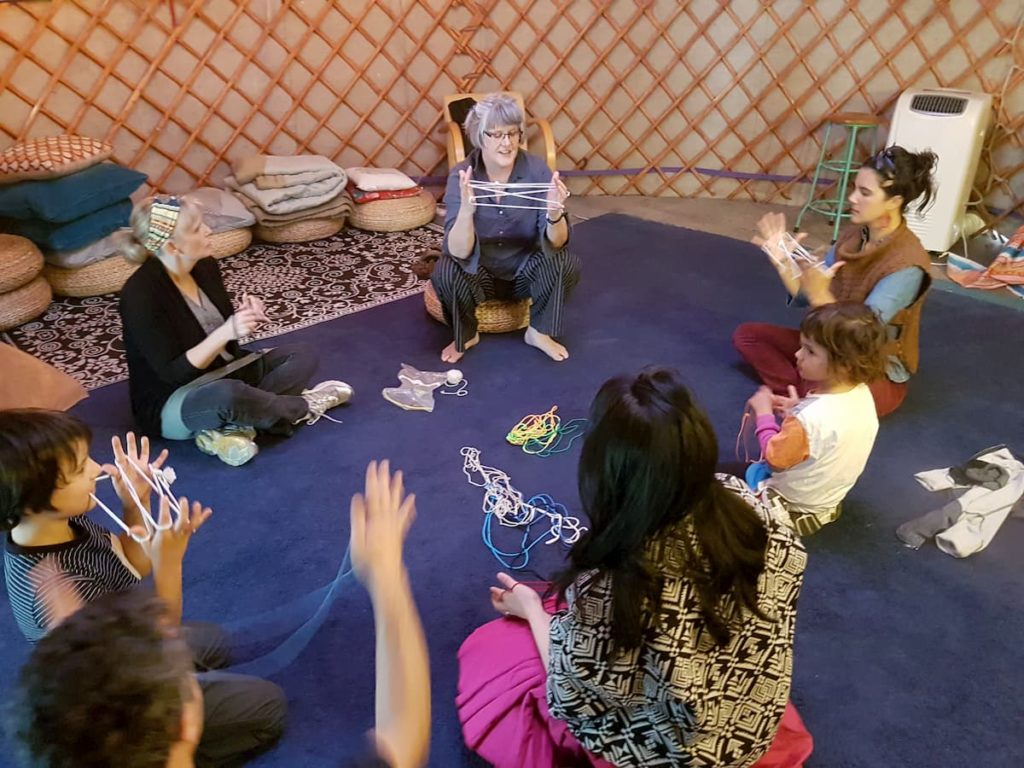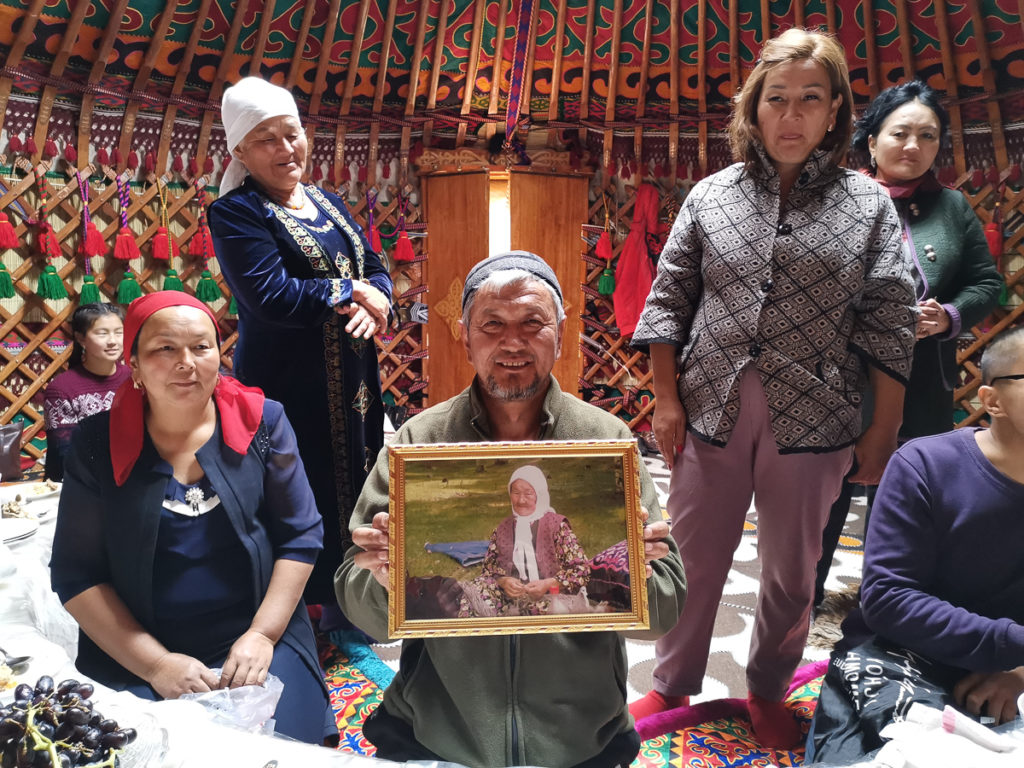
Yurts are matriarchal structures which usually include a homage to the founding mother. This is Shaloo with a photo of his mother-in-law Omul.
Our issue on the Stans gave us a taste of the unique cultures of Central Asia. Now we can explore a little more deeply one of the key structures in nomad life: the yurt. The yurt is a key space for Kyrgyz craft, family, culture and cosmology. Dinara Cochunbaeva shares her learnings about this and we look at how the yurt can travel to the other side of the world.
Issyk-Kul region of the Kyrgyz Republic covers an area of 43.1 thousand square km, its population is about 450 thousand people. The region takes its name from Lake Issyk-Kul, located on its territory. The high mountain lake Issyk-Kul, called the “pearl of Kyrgyzstan”, is one of the main tourist attractions of the country.
Not so long ago, about 80-90 years, the yurt was the main type of housing for the Kyrgyz people. And although at present almost the entire population of Kyrgyzstan lives in houses, the yurt has not lost its significance. It can still be found everywhere—in the capital, and along the roads of the whole republic, and in the nearby villages, and in the most remote jailoo.
Yurt, the portable dwelling of many nomadic peoples, appeared in the VIII-V centuries BC. The yurt is not just a home, but also a receptacle of all nomadic social and cultural life, including crafts traditions and technologies. Kyrgyz craftsmen – producers of the yurts, mostly live in the villages of Issyk-Kul oblast: Kyzyl Tuu (Ton district), Barskoon (Dzhety Oguz district), Semenovka and Karohol Dobo (Issyk-Kul district), Kara-Kol (Tyup district ). In Kyzyl Tuu village with population of 1800 people, almost every family is engaged in the manufacture of yurts. The best-known masters in production of yurts: Zhylychy Sharshembiev, Orozobay Kenchenbaev, Sapar Ismailov, Onol Monoldorova and others.
 For the Kyrgyz, the yurt is not just a house, it is a model of the universe, with its own laws and microcosm. Detail of the yurt, a tyunduk crowning the dome of the yurt, is depicted on the Kyrgyz flag.
For the Kyrgyz, the yurt is not just a house, it is a model of the universe, with its own laws and microcosm. Detail of the yurt, a tyunduk crowning the dome of the yurt, is depicted on the Kyrgyz flag.
A yurt accompanies the Kyrgyz at all stages of life from birth to death. The yurt is easy to assemble and disassemble (it can be fully installed within an hour), it is convenient to transport it. It keeps cool in the summer heat, protects from rains and winds, stores heat in winter cold. Today, like thousands of years ago, pastoralists live on summer pastures in yurts. Yurts are placed on squares in cities and regions during national holidays, it is indispensable for various ceremonies and rituals (weddings, funerals), and plays the role of a country house or guest house. In the tourism industry of Kyrgyzstan, the yurt occupies a special place.
The inner space of the yurt is divided vertically into three parts, in accordance with the idea of the three hypostases of the universe: ground, or the lower, other world; walls are the world of people; the dome is the upper, sacred part.
A yurt consists of many details, which have their own name. The main ones are: sliding walls of the yurt, kerege (dome poles), uuk (a wooden round rim), a support for the roof of a yurt, (tunduk); and felt for covering yurts (tuurduk).
Horizontally, the yurt is divided into two parts, male and female. The right side of the yurt is called epchi jacques (the female half). The female half of the yurt is traditionally designed for family life: all households gather here, there is a cradle, kitchen utensils and chests with foods, separated from other space by a screen (ashkana chiy), a loom. The left half (Er Jacques) is the male part, where horse accessories, craft and hunting items are placed. On the male side, all rituals related to deceased relatives are also performed.
Directly opposite the entrance, where the male and female halves of the yurt meet, the most honorable place is located, the tor. It is designed to receive guests. Here, on the pole, expensive clothes are hanging (hats, fur coats), there is a chest for storing especially valuable things.
The floor of the yurt is covered with felt and woven carpets, embroidered panels, bags and hanging shelves hang on the walls. Each item, decorated with sacred ornaments, has its own place and special significance. The door to the yurt is made wide enough, but not high, only 1.5 m. The door is decorated with magic patterns to attract good luck and wealth, and protect the household from evil forces. In the middle of the yurt is the fireplace (colomto).
There is strict etiquette associated with the yurt. For example, a rider must not approach the yurt at full gallop; the door curtain needs to be removed only with the right hand and enter the yurt with the right foot, without stepping on the threshold. You cannot enter the yurt with weapons, with a whip in your hand or with your mouth full of food; you cannot leave the yurt without tasting food in it. You cannot squat in a yurt, leaning on something with your back or stretching your legs forward.
Yurts are made by artisans at home, where they equip workshops. Today, craftsmen carry out their activities as an individual entrepreneur. They usually work with their family members. Sometimes, to carry out a large order, a family involves additional workers, or several families join together. Artisans produce kinds of the yurts: ordinary (D=5-6m), large representative yurts (up to D=8 m), small yurts (D=3-4m), for children (D=1,5-2m), souvenir yurts.
The raw materials for the frame of the yurt are different kinds of wood, mostly easily bending willow, for the tundyuk, birch or elm tree with hardwood are used. The walls of the yurt are made of a special reed (chiy) growing around Issyk-Kul Lake. As a rule, craftsmen buy willow branches of the required thickness from farmers, who cultivate them on special plantations, or grow willows themselves in their garden plots. Collecting of the wild reed requires special knowledge and skills from artisans, so that the process does not damage its growth next year and does not lead to the disappearance of this endemic of the local flora. Harvesting of raw materials is seasonal: February- March and October-November, sometimes until December.
In the manufacture of the frame of the yurt, the male masters (uychu) use the simplest tools: an ax, a saw, a plane, a chisel, various wood cutters, a set of metalwork tools. The billets are dried, cleaned of bark, evaporated and bent, giving the desired shape, using special home-made machines.
Wool from local sheep and yaks, horsehair, and cotton fabric are used as raw materials for covering and interior decoration of a yurt. Women make felt to cover the yurt (tuurduk), weave patterned braids (terme) from woolen yarn for fastening the details of the yurt, weave ropes (arkan) from yak wool. The interior of the yurt both men and women make: furniture (wooden hangers, chests and coasters), kitchen utensils, bedding from animal skins, floor carpets (shyrdak, ala-kiyiz), bedding (toshok) and blankets (zhuurkan), hanging bags (ayak-kap) and shelves (flow), It takes about a month to create a yurt, and about six months to complete the yurt with full interior decoration.
Felt for covering yurt is also made at felt factories in Bishkek and Tokmak town. In recent years, craftswomen have used acrylic yarn imported from China, which reduces the quality of the final product and harms the image of manufacturers.
Yurts are bought by local residents for domestic and ritual purposes, shepherds—as housing on summer pastures, entrepreneurs—to organize business in them. Kyrgyzstan is the main supplier of yurts for the Turkic-speaking countries of the world, primarily for Kazakhstan and Turkey. Often masters are ordered to produce the yurt with full interior decoration. Demand for yurts is growing.

Orders come to masters from many countries of the world. For a year, one family can produce from 5 to 10 yurts.
Learning to make a yurt occurs only in the traditional way, by transferring knowledge and skills in the family (from father to son, from mother to daughter), or from the master to apprentices.
It is possible to buy a yurt directly from a craftsman from his workshop, or through intermediaries, which are both organizations and individuals. Yurts are also sold successfully through social networks. In general, up to 300 yurts are produced and sold in the Issyk-Kul region per year. The cost of a yurt depends on the type of wood, the configuration and the quality of the external and internal decoration. A yurt measuring 6 meters in diameter can cost from 3 to 20 thousand US dollars.
During major national holidays and international events, yurt owners do good business by renting their yurts to event organizers. Often government bodies play the role of organizers. Also, yurts are rented by ordinary residents for various family celebrations, as well as funerals. Rental price is from 40 to 150 dollars per day.
Due to the ease of installation and transfer of the yurt, it is often used by traders as a temporary outlet on the highway or in places of tourist congestion. Local residents install and rent their yurts to tourists traveling on their own.
Yurts in Kyrgyzstan are widely used in the tourism industry. Guest houses, shops, cafes, etc. are located in them. Yurt camps are very popular, where tourists can completely immerse themselves in the world of nomadic culture. Visits to yurt workshops, master classes and shows are often included by tourist companies in their tour programs. The ethno-complexes which consist only of yurts are located in the south of Issyk – Kul region. One complex accepts up to 3000 guests per year. The ethno-complexes cooperate with 18 travel agencies, tourists may also make a reservation through by means of website.
Development of the tourism industry has a significant impact on the growth of incomes of the Issyk-kul region population. According to the tourism department of the Ministry of Culture of Kyrgyzstan, in 2018, 900,000 tourists visited Lake Issyk-Kul. As indicated, the gross value added in the tourism sector in 2018, according to preliminary estimates, amounted to more than 27 billion soms, or 5 percent of GDP.
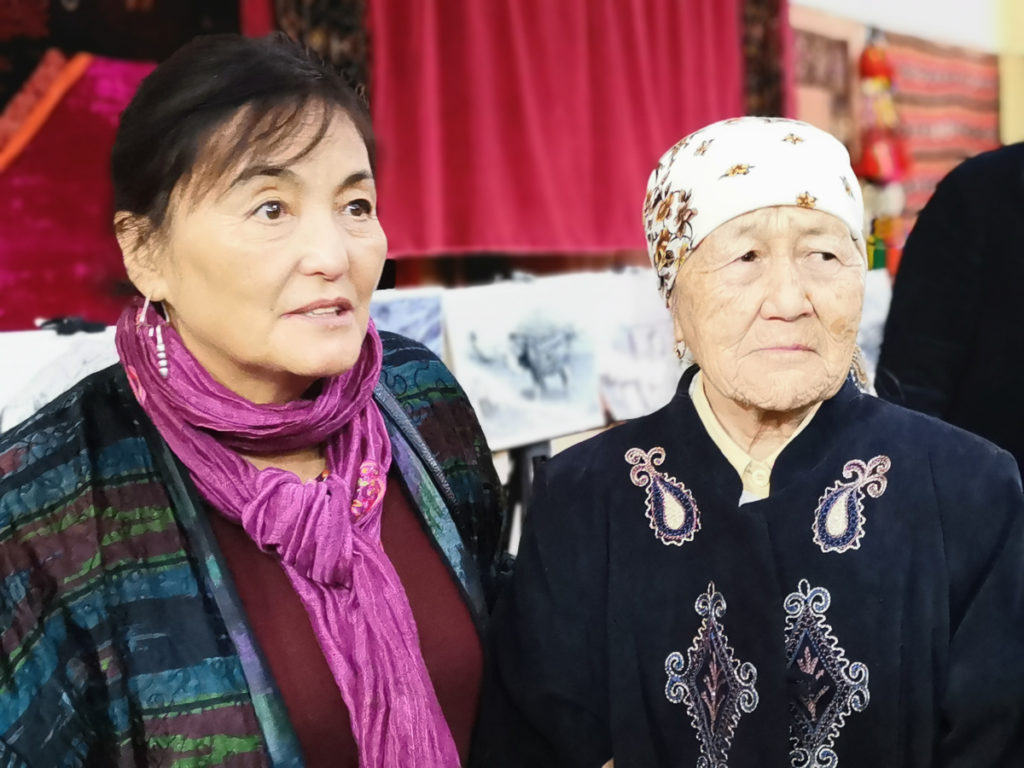
Two powerful women whose strength sustains Kyrgyz culture. — Keneshkan Smanova, the founder of the historical museum in Karakol with Dinara Chochunbaeva.
Yurt in Melbourne
- Scenes in the Melbourne yurt from the string figure workshop by Robyn McKenzie on 1 October 2017
- Scenes in the Melbourne yurt from the string figure workshop by Robyn McKenzie on 1 October 2017
- Scenes in the Melbourne yurt from the string figure workshop by Robyn McKenzie on 1 October 2017
I had “Yurt” written on blackboard list in my warehouse kitchen for a year. When I first wrote it, it seemed like an unlikely wish, but after a while, on some subconscious level, it became another “to do” thing to cross off the list. I dreamt up a yurt as a solution to winter warehouse living. Living in commercial warehouse spaces with their long leases was, in its turn, my solution to short term rental accommodations that were in short supply. A 12-month lease, which is standard in Melbourne, seems very short term when you have kids. Plus kids are often unwelcomed by landlords. Warehouse living also offered a bonus of being a non traditional way to raise a family, which is otherwise one of the most traditional things you can do. But it came with all kinds of design issues, that made living less comfortable.
The warehouse space with the blackboard came to an end; we had to move out due to a council clamp down on living in a non residential space.I then found a tin shed in a mixed use zone, with a beautiful wooden frame and lofty ceilings in a great street in a great area.The yurt became my number one solution to living a semi indoor/outdoor life in a building with zero insulation.
I had already found a woman who was importing second hand ghers (the local term for yurts) from Kazakhstan, so I got in touch and after a few meetings she was good enough to offer the $10,000 on a payment plan.And so my partner and I had our first mortgage of sorts.The downside of that arrangement was she kept two poles from the ceiling, which she was supposed to be mending. We could manage without them and didn’t chase them up, until the last payment was due to be made.I requested the poles when the last $100 was outstanding and she refused to deliver them and do a hand over for cash. There was a stand off for a few weeks until I paid the last $100 and I never got the last two poles!
We lived for five years in the yurt in one big 7 metre diameter room. It was cosy all year round and offered the right amount of warmth in winter and was mostly bearable in summer with the addition of a portable air conditioner.The kitchen and living room were outside the Yurt in the shed. Our daughter wanted her own bedroom so we organised a beautiful cubby house style shelter that had originally been built as an artwork by a friend of ours. But it was small and didn’t have enough wall space to hang her posters. She didn’t like it much and craved normal deeply!
Our son loved the wide open spaces for playing, he could scooter indoors and we had a geodesic climbing dome next to the Yurt. After 5 years we gave into our daughters needs and the extreme heat of shed summers and moved to an apartment up the road.Our son went through a grief period at moving out of this boho wonderland. I was relieved to live in a house where everything worked, my daughter was happy and we kept the yurt and the warehouse on a communal artists studio space. We have music performance afternoons in the Yurt every two or 3 months. When our lease is up on the shed, we plan to move the Yurt to the country where it will most likely blend into the landscape and slowly dissolve into its surrounds. I think the climate in Victoria is considered too wet for it to last longer than perhaps 5 years, but we will see. More Yurt adventures await!
Lichen Kelp is an artist specialising in the chemistry of colour.

